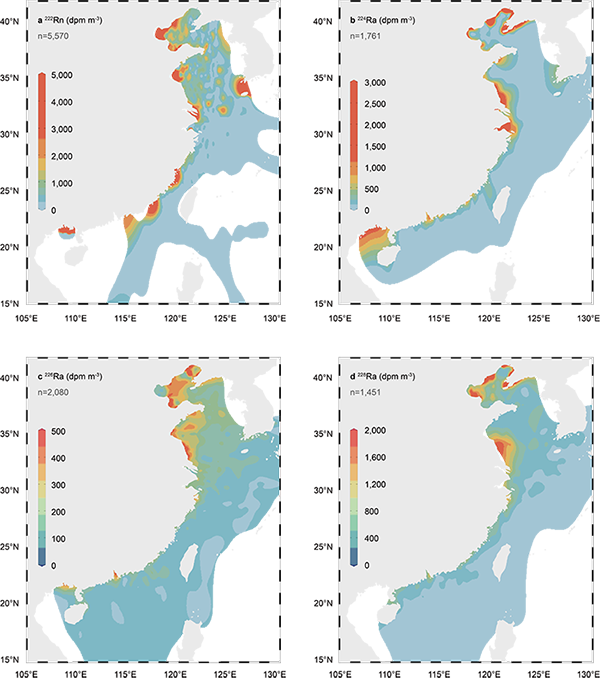The latest research from the Key Laboratory of Marine Chemistry Theory and Technology at OUC has made new progress in the research on Submarine Groundwater Discharge (SGD) and its contributions to coastal nutrient budgets. This study, titled “Large-scale submarine groundwater discharge dominates nutrient inputs to China’s coast”, has been published in Nature Communications.
Submarine Groundwater Discharge (SGD) refers to all the water exchange processes at the seabed interface, which include both Fresh Submarine Groundwater Discharge (FSGD) and Re-circulated Submarine Groundwater Discharge (RSGD). SGD is a key driving force for material exchange at the land-sea interface, and plays a crucial role in the biogeochemical cycles of coastal zones. Currently, SGD studies in China mainly focus on local and regional scales, such as estuaries and bays, lacking comprehensive understanding of the SGD fluxes along China’s coastline.
The research team developed a radium and radon isotope tracing model to address the challenges of quantifying different types of SGD fluxes. The team has long worked on the use of natural radium and radon isotopes as tracers for various oceanographic issues, accumulating extensive observational data. They have built a high-resolution database of radium (224Ra, 226Ra, 228Ra) and radon (222Rn) isotope concentrations in coastal seawater and groundwater along China’s coast. By doing so, the researchers clarified the distribution patterns of these isotopes in the region (Figure 1). The team then developed a multi-isotope quantitative model, distinguishing and quantifying FSGD and RSGD in China’s coastal waters. By leveraging Monte Carlo simulations, they assessed the uncertainties in the SGD calculation results. Their findings indicate that the fluxes of FSGD and RSGD are 3.56×108 m3 d-1 and 1.82×1010 m3 d-1 respectively in the nearshore waters (depths of 20-30 meters). The total SGD flux is approximately five times that of river runoff, with about 98% of the SGD flux coming from recirculated seawater. In the continental shelf region, the RSGD flux is around 2.09×1010 m3 d-1. Although the nearshore area accounts for only one quarter of the continental shelf, it contributes 87% of the RSGD flux, revealing that the nearshore shallow waters are hotspots for SGD.
Based on these findings, the research team further created a nutrient budget model for the shelf waters. This research reveals the significant contribution of seabed boundary exchange processes to biogeochemical cycles of marine nutrients, offering valuable insights for sustainable marine development policies.

